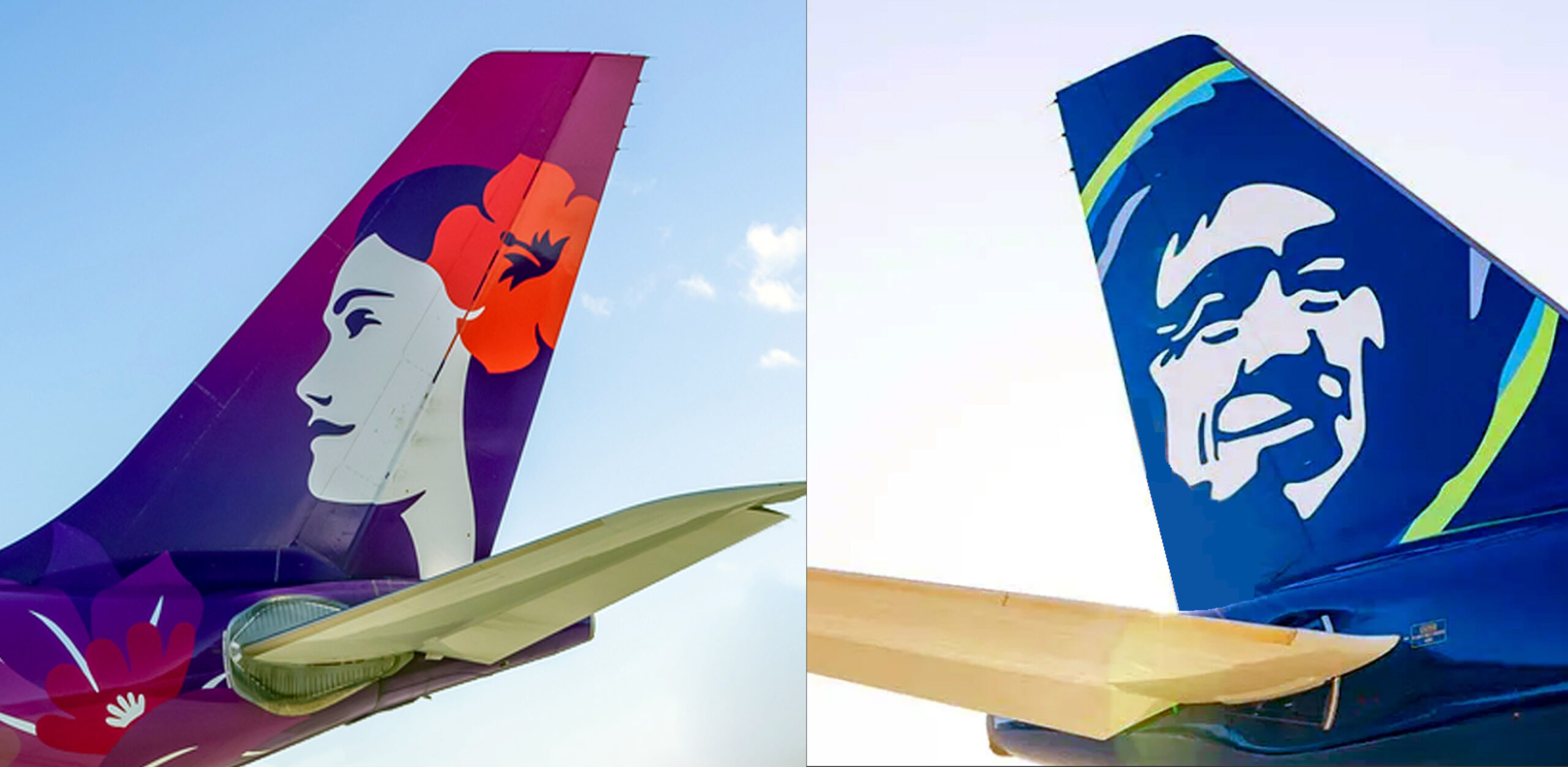Marriage Minded
December 4, 2023
OVER THE WEEKEND, Alaska Airlines announced it will purchase Hawaiian Airlines for a reported $1.9 billion. If approved, the merger will form the nation’s fifth-largest carrier.
I find this interesting for a number of reasons — though probably not the ones most people are talking about. You can pop over to the other news and travel sites to learn about how this union does or doesn’t make sense, strategy-wise. You can read about loyalty programs, stock prices, and the alleged woes of yet more industry consolidation. My take is more fun:
Alaska and Hawaii. Our most geographically extreme states, numbers 49 and 50. One mammoth and frigid, the other small and tropical. They share a lot of traits: remoteness, mountains, indigenous people, whales.
Then we have the tails. Alaska and Hawaiian are the only carriers I know of whose liveries feature faces. One is a woman, the other a man. They stare longingly at one another across the vastness of the Pacific.
It’s romantic, no? They’ve been courting this merger all along, haven’t they? Thus we have a more literal marriage than are most mergers.

Both faces, by the way, are borrowed from real people.
The visage at Hawaiian is that of a woman named Leinaala Teruya Drummond. The former Miss Hawaii, she’s been up there since 1973. Ms. Drummon passed away in September at age 77.
Mr. Alaska’s history is a little less clear. What we know for sure is that he’s not Old Man Winter, Johnny Cash, an age-enhanced Che Guevara, or the former Arkansas governor Mike Huckabee. He is an Eskimo. An Inuit. Though even the airline isn’t sure which one. They narrow him down to one of two native Alaskans: a reindeer herder from Kotzebue named Chester Seveck, or a man named Oliver Amouak, who appeared in an airline-sponsored “traveling stage show” in the 1950s.
Whichever is correct, he’s an iconic mascot and deserves to remain up there, in monochrome and smiling warmly in his parka.
For all of these reasons, I’m happy to hear that the plan is to keep both brands intact. Financially the carriers will be as one, but will operate independently under their own names. I suppose this makes sense. It’d be a little weird to have an entity called Alaska Airlines with a hub in Honolulu. Hawaii-Japan is one of Hawaiian’s busiest markets, and I imagine Japanese passengers in particular would find it baffling.
Of course, things like this have a way of changing. I wouldn’t be shocked if a year from now one of the two brands is subsumed or the carrier changes its name entirely. Pacific Airways, anyone?
Photo credits: Alaska and Hawaiian Airlines.




